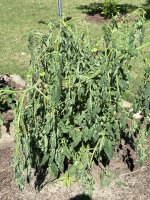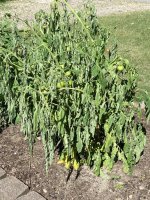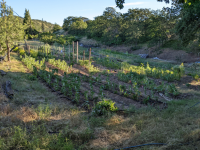- Messages
- 12,167
- Location
- Constantine, MI
We tried again this year to grow some tomatoes. The plants were thriving! We were looking forward a bumper crop. We thought we had finally avoided the vole problem that killed our plants last year. Then, in spite of my using nearly ten times the prescribed amount of mole/vole replant they got through and destroyed all 5 plants in just a few days. I'll likely just yank them out of the ground and toss them in the woods. I'm soooo disappointed.







